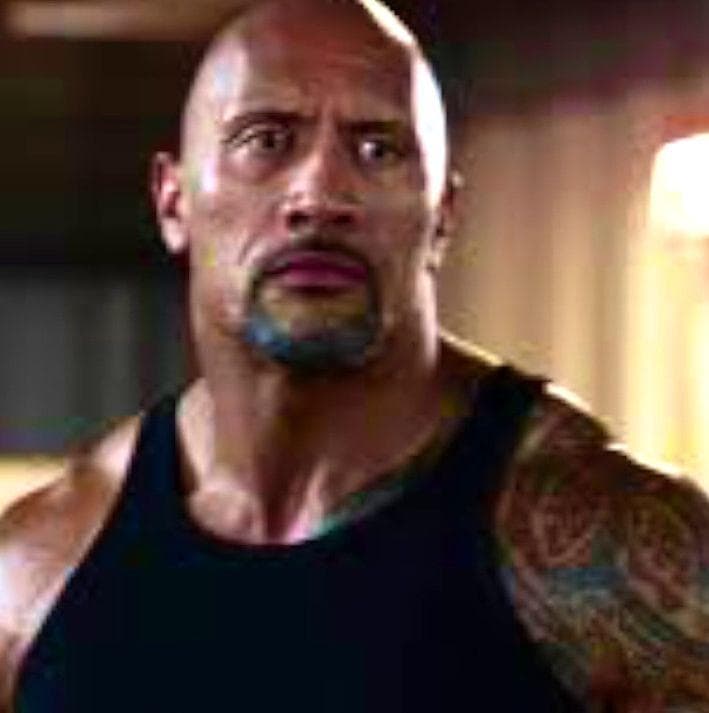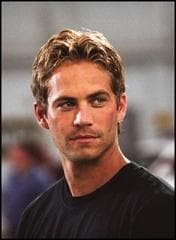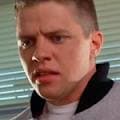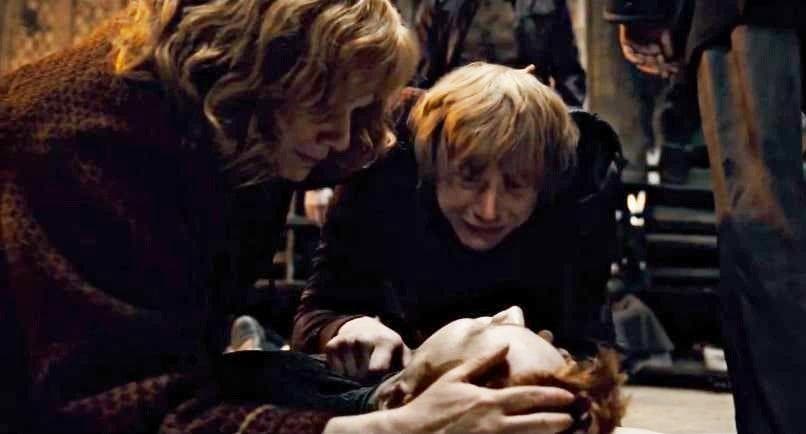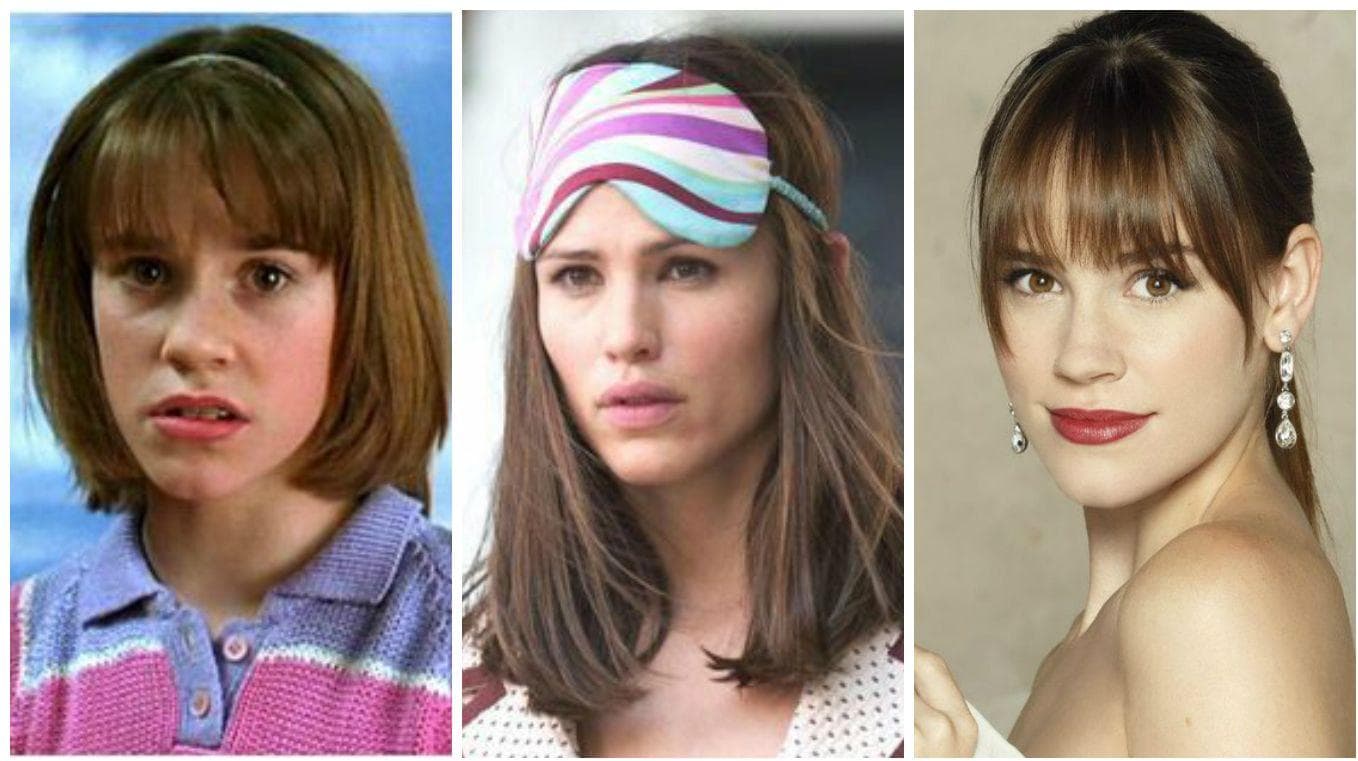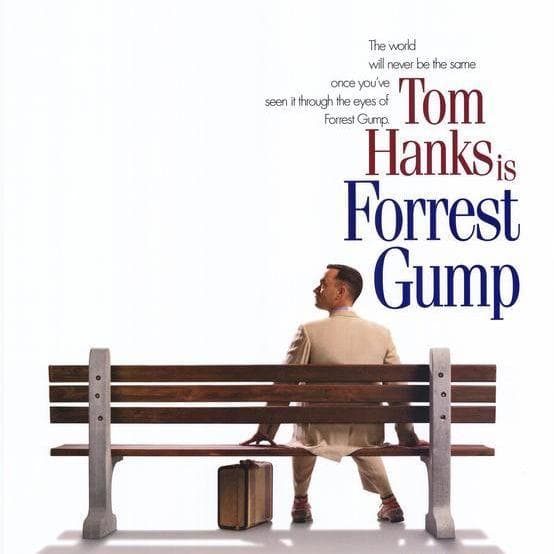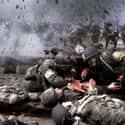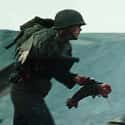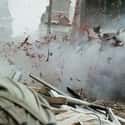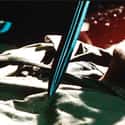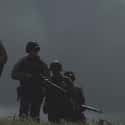-
(#1) Spielberg Shot The Film In Chronological Order Because He Wanted It To Be A Demoralizing Experience
By the end of Saving Private Ryan, the cast looks completely physically and mentally drained, and it's not just because they're really good actors. Before Ryan, Spielberg hadn't shot a film in order since E.T. (1982). He explained that he filmed in that unconventional style for E.T. because he wanted the child actors, many of whom had never appeared in a movie before, to understand exactly where they were going in the story.
For Saving Private Ryan, he decided to once again film the movie in order. Unfortunately, he had no idea just how traumatic it would be for the cast. "I didn't realize how devastating that was going to be for the whole cast to actually start off with Omaha Beach and survive that as a film team, and then move into the hedgerows, move into the next town, as we all began to get whittled down by the storytelling."
-
(#2) Tom Sizemore Was Required To Take A Drug Test Every Day
Steven Spielberg wanted Tom Sizemore to play the role of Sergeant Horvath so much that he granted the actor the part despite Sizemore's well-known meth addiction. In order to keep him clean, Sizemore was required to take a drug test every single day. If he ever failed, even if it was on the very last day of shooting, the director told Sizemore he would remove him from the film, and reshoot all of his scenes with another actor.
Sizemore made it through the brutal 58 day shoot that was Saving Private Ryan. Unfortunately, he has since had an up and down battle with drugs as seen on Celebrity Rehab With Dr. Drew.
-
(#3) The Cast Went Through A Brutal Boot Camp
Spielberg required the principle cast of the film to participate in a seven-day boot camp in order to get a true taste for the hardship of military life. Despite what you might think, the actors were not given preferential treatment. The boot camp leader, Captain Dale Dye (a military advisor and Marine veteran of the Vietnam War), pushed the actors to the limits of their physical endurance.
Their days were filled with push ups, constantly getting screamed at, six mile runs, and scarce food supplies. This left many of the actors vomiting from exhaustion, shivering from the cold, and on the edge of a mental breakdown. Dye's company Warriors Incorporated also worked on Platoon, Outbreak, and Forrest Gump, in an effort to remove "the phoniness" from war movies.
The actors who took part in the boot camp included: Tom Hanks, Tom Sizemore, Edward Burns, Jeremy Davies, Vin Diesel, Barry Pepper, Adam Goldberg and Giovanni Ribisi. Ed Burns, who called boot camp the worst experience of his life, described the training environment. "We get there, we set up our tents, and it starts raining and it doesn't stop raining for seven days. It is 30 degrees at night and you are in a soaking wet tent, a soaking wet uniform, with a soaking wet blanket wrapped around you."
-
(#4) (Almost) All Of The Actors Voted To Leave Boot Camp
The actors wanted to leave boot camp. They felt that if they continued with the rigorous training, they would not be healthy enough for actual filming. They wanted to check into a nice hotel and maybe get some room service, instead of suffering in the elements, rain-soaked, exhausted, and starving. They took a vote, and all the actors voted to leave boot camp. Well, except for Tom Hanks. Once Hanks voted against leaving, all the other actors fell into place.
"I loved it!" said the two-time Oscar winner. "They all wanted to quit and I said, 'No'.' The actual boot camp was very cold and it was very miserable and it was very humiliating. It was exhausting, we didn't get much sleep. We worried about getting sick and we worried about getting hurt, but we were never worried about those being the six most worthwhile days that we could have."
Vin Diesel immediately gained a ton of respect for Hanks. "We were all exhausted, we all wanted to leave and here was this guy who was a superstar, who doesn't have to be here, voting to stay. That's when we adopted him as our captain. He said, 'Guys, 20 years from now, you'll look back on this and wished to God you had finished it.' To this day, we are all extremely grateful that we did."
-
(#5) The Cast Really Did Resent Matt Damon
The entire principal cast were required to take part in six days of rigorous army training. That is, everyone except for Matt Damon. In the film, the solders resent Damon's titular character, Private Ryan, for making them go behind enemy lines to save him. In order to bring that resentment to the big screen, Damon was intentionally left out of training (he did later train with other paratroopers in his "unit").
"I wasn't invited to the boot camp," Damon explains. "It was a great ploy on Steven's part because what it did, since the film is about these eight guys who are looking for one guy, they are risking their lives for this one guy and a resentment breeds among them for this one guy. The boot camp couldn't help but foster a kernel of resentment, because while they are sleeping face down in the rain they were well aware that I was at home in bed. So, by the time I show up on set and flippantly ask, 'Hey, guys how was boot camp?', that resentment is right there. It created that separation."
-
(#6) The Government Set Up A Toll-Free Hotline For Veterans Who Needed Assistance After Watching The Movie
Saving Private Ryan was so graphic and realistic that the U.S. Department of Veteran Affairs set up a toll-free hotline to assist veterans who suffered from PTSD and experienced flashbacks after watching the movie. "Counselors at VA medical facilities have been asked to prepare to assist veterans who experience emotional trauma as a result of the movie," said a spokesman for the VA in Washington, D.C. "VA similarly assisted veterans following the movie Platoon, which had profound impact on veterans exposed to combat."
-
(#7) Amputees Were Used As Extras During The Opening Scene
Actual amputees were used as extras during the opening scene to make all the war injuries as gruesomely realistic as possible.
"We had somewhere between 20 and 30 amputees and paraplegics who worked with us, creating very realistic scenes where we could use effects to make it look like soldiers were losing limbs. Some might say it was an insensitive approach, but they all did it with great enthusiasm," said associate producer Mark Huffam.
-
(#8) The Film Is Partly Based On A True Story Of Four Brothers
Robert Rodat's Academy Award-nominated screenplay is loosely based on the story of the Niland brothers, four siblings from Tonawanda, New York. The men enlisted in the US Army to serve in WWII. Due to the famous Sullivan case, where five brothers from the same family were killed when their US Navy ship sunk in 1942, the army established a new rule restricting immediate family members from serving together.
Three of the brothers were thought to be killed in action (Robert, Preston, and Edward.) In order to save the family the devastation of losing all four sons, Fritz (who the Private Ryan character is based on) was sent back to America. The Nilands also found out one year later that their son Edward was still alive in a Burmese POW camp after parachuting from his plane. When Edward returned to the United States, he weighed only 80 pounds, but he managed to survive until his death in 1984 at the age of 72.
-
(#9) Garth Brooks Turned Down The Role Of Private Jackson
Country music superstar Garth Brooks was looking to break into the movies in the 1990s. He met with Frank Darabont, a screenwriter, who was working on a rewrite of Saving Private Ryan. Darabont wrote a part specifically for Brooks into the script, a sniper named Private Jackson (the role that eventually went to Barry Pepper.) Brooks turned down the opportunity because he didn't think that anyone would want to see a war movie starring Tom Hanks.
Spielberg must have really wanted the singer in the movie because he asked Brooks if there was another role in the film that he wanted to play. Brooks told the director that he wanted to play a "bad guy." The only thing is, there are not really any villains per se in Saving Private Ryan, unless you count the abstract concept of conflict. Brooks ultimately walked away from the movie.
-
(#10) The Film Was Banned In Malaysia For Its Uncompromising Violence
Spielberg's commitment to verisimilitude cost Saving Private Ryan an international market, as Malaysia's Film Censorship Board refused to allow the film's exhibition without significant cuts to its graphic violence. The director, however, made no such cuts, and the film was never released theatrically in Malaysia.
Spielberg was adamant that combat scenes remain intense and unrelenting, not simply as part of an aesthetic, but as a fundamental element of the movie's philosophy. "If you cheapen it, if you make it more palatable, if you somehow diminish what went on there, I think you end up doing a great disservice to what the movie as a whole is trying to communicate," he explained.
He was infelxible even in face of a possible NC-17 rating in the US, saying, "I wasn't going to add my film to a long list of pictures that make World War II 'the glamorous war,' 'the romantic war.'"
-
(#11) The Omaha Beach Sequence Was Filmed In Ireland
Steven Spielberg and his crew went to incredible lengths to make the beaches of Curracloe in Wexford, Ireland look nearly identical to the beaches in Normandy on D-Day. Wexford was selected because of its white sandy beaches, which resembled the Omaha landing beach. Several local Irish men were granted roles as extras. In order to add to the realism of the film, Spielberg used Irish Army Reservists who knew how to act like solders.
So why travel all the up to Ireland to film, especially considering that other scenes in the movie were actually shot in France? Irish author Annette J. Dunlea, who grew up visiting the white sandy beaches of Curracloe, offers an explanation:
There were some concerns that recreating the scenes in their original location might be in bad taste. It is clear once you’ve visited the area that this isn’t just a place that people visit for the anniversary of the landings every June 6th. All year-round veterans, descendants, historians and school children visit the area to reflect and pay tribute to the forces who lost their lives there. There is a perpetual sense of respectful silence about the area, especially the Omaha area. To break this calm with a full-scale Hollywood-guns-blazing re-enactment would have been akin to breaking the peace that the soldiers of D-Day fought for.
-
(#12) Michael Bay Declined The Chance To Direct
The very same summer Saving Private Ryan made an impression on moviegoers, the event movie Armagedddon took audiences into a doomsday scenario in which oil drillers get into a spacefaring knock-down, drag-out brawl with a particularly unpatriotic asteroid. Michael Bay's popcorn epic hit theaters on July 1, just weeks before Spielberg's war drama hit theaters on July 24. Turns out, however, that Bay might've directed Saving Private Ryan several years before.
When Bay, a prolific and acclaimed commercial director, was preparing to make his feature directorial debut with 1996's Bad Boys, he was given a crack at an earlier draft of Robert Rodat's script. "I had gotten movie offers and turned them down. I took my time. They sent me Saving Private Ryan," said the director, who went on to helm no fewer than five Transformers films executive produced by Spielberg. "But I wouldn't have known what to do with it."
Bay made his own WWII film several years later, overseeing 2001's Pearl Harbor.
-
(#13) Mellish's Demise Was Initially Even More Disturbing
Beyond the fire and fury of the introductory Omaha Beach sequence, one of the most upsetting scenes is Private Mellish's brutal, increasingly desperate fight with a German SS officer. The third-act brawl ends horrifically, with an up-close intimacy as Mellish is slowly killed as he frantically begs for his life. As impactful as the moment is, it was initially even worse.
“Steven and I started talking about it, about wanting it to be as realistic as possible. There was a lot more of what you saw in the rough cut," according to Adam Goldberg, who played "Fish" Mellish. "It was so graphic that Steven’s projectionist - who projected the dailies in Los Angeles - told him he can’t leave the scene in the movie. It’s too painful to watch. Remembering back, I think there was a lot more of me screaming how much it hurts.”
-
(#14) Spielberg Developed The Film Using A Rare Technique
When developing the film for Saving Private Ryan, Spielberg and cinematographer Janusz Kamiński opted to use a bleach bypass, also called a silver retention process. Essentially, this technique skips the bleaching process of color film and retains the silver hue. Silver retention gives the film a desaturated, washed out look and makes the color film almost appear black and white. The visual style adds to the bleakness of the Normandy battle.
Several other popular films have used the same silver retention process. For example, director David Fincher and cinematographer Darius Khondji used a bleaching process in Seven (1995). They wanted the color during the crime scene segments to appear black and white, in order to create a dark atmospheric film noir mood. Spielberg also went back to silver retention for Minority Report in 2002.
-
(#15) It Was Very Nearly Shot In Black And White
Saving Private Ryan was not Spielberg's first jaunt into WWII, having previously directed the post-Pearl Harbor comedy 1941, two Indiana Jones adventures prominently featuring the Third Reich, along with the fact-based Empire of the Sun and, most notably, Schindler's List. Unusually, the director's acclaimed examination of the Holocaust, which won seven Academy Awards in 1994, was released in black-and-white, with color limited to a few striking, character-specific bits of flair.
Spielberg and cinematographer Janusz Kamiński considered returning to a monochromatic presentation for Saving Private Ryan, but decided early on that it wasn't the right approach.
“Black-and-white was the right choice for that film because of the subject matter and because most of the real footage of Nazi atrocities was photographed in black-and-white,” the director of photography explained. “However, there is a tremendous amount of documentary footage from World War II that was photographed in color."
“We also wanted to shoot this picture in color because there is some blood in the film and we wanted to play with the reds, even though we did desaturate the colors," he said.
-
(#16) Even The Cast Was Surprised By The Final Product
Though the subject matter and their grueling experiences of both boot camp and production served as warning for the cast that the film would be impactful, most still weren't prepared for the full weight of Saving Private Ryan's frontline perspective.
"I was surprised and shocked," Hanks said of his first viewing, "I didn't think it was going to be as much of everything as it is. I didn't think it was going to be as graphic, as emotional or as cerebral. I didn't think the psychological drama of the characters was going to be as powerful. I thought it was going to be a much more objective movie to get into. I was really surprised that the movie got under my skin as much as it did."
Damon, meanwhile, said, "It gave me a perspective. I came to understand that I don't understand what it was like for these people. It brought it home in an important way. I came away with a certain amount of guilt about my generation, the notoriously apathetic Generation X who can be seen everyday on talk show television lamenting the fact they weren't breast-fed long enough. It really puts it into perspective, these were really ordinary guys, they weren't career soldiers, it's not like Rambo."
-
(#17) The Film's Loss To 'Shakespeare In Love' Is Considered One Of The Biggest Oscar Snubs Ever
Saving Private Ryan's loss to Shakespeare in Love is probably the biggest Best Picture snub of all time. Sure, the film had already won five Academy Awards that evening in 1999, including Steven Spielberg's trophy for Best Director. At the time, the Best Picture Oscar announcement only appeared to be a formality. Things took a hard left turn, however, on Oscar night.
The name strength of Miramax and Harvey Weinstein's aggressive Oscar campaign that year was enough for the low-budget period drama to beat out the epic war film. A young, radiant Gwyneth Paltrow nabbing a Best Actress Oscar also helped Shakespeare in Love's cause.
Tony Bill, an Oscar-winning producer of The Sting, suggested the Academy voted the same way an average moviegoer would have: "Ryan is painful to watch. There’s no joy. People voted for the fun movie.”
New Random Displays Display All By Ranking
About This Tool
Our data comes from Ranker, If you want to participate in the ranking of items displayed on this page, please click here.

